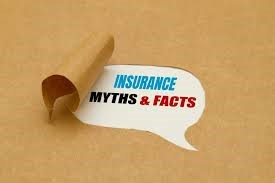10 Common Insurance Myths Debunked: Understanding the Truth Behind Popular Misconceptions
Many people hold onto myths about insurance that can lead to misunderstandings and poor decisions. Knowing the truth behind common insurance myths can help individuals choose better coverage and save money. From believing that all policies are the same to thinking that certain types of coverage are unnecessary, these myths can affect how people plan for their financial future.
Understanding insurance can be complicated, but debunking these myths can simplify the process. Each myth addressed in this article reveals important insights that can guide people toward more informed decisions. This knowledge is essential for anyone looking to secure the best protection for themselves and their families.
Key Takeaways
- Many common beliefs about insurance can mislead consumers.
- Recognizing the facts can lead to better coverage choices.
- Accurate information is key to effective financial planning.
Busting Common Insurance Myths
Many people believe common myths about insurance. These misconceptions can lead to poor choices. It is important to know the truth to make informed decisions.
Myth 1: Red Cars Cost More to Insure
A common belief is that red cars are more expensive to insure. This myth has no basis in fact. Insurance rates depend on factors like the car’s make, model, and safety features.
Insurance companies look at risk when setting rates. Color does not affect risk. Drivers should focus on safety records and repair costs when choosing a car.
Myth 2: Your Credit Score Doesn’t Affect Insurance Rates
Some think that their credit score has no impact on insurance rates. In reality, it plays a significant role. Many insurers use credit scores to help determine premiums.
A better credit score often leads to lower rates. Insurers believe that responsible financial behavior relates to responsible driving. Therefore, improving financial health can help reduce insurance costs.
Myth 3: Insurance Covers All Kinds of Damage
People often assume that insurance covers all types of damage. This is not true. Policies have limits and exclusions.
For example, many standard policies do not cover damage from floods or earthquakes. Policyholders should read the fine print. Knowing what is and isn’t covered helps avoid surprises during a claim.
Myth 4: Only the Minimum Required Coverage Is Necessary
Some drivers think that carrying only the minimum coverage is enough. This can be risky. Minimum coverage may not protect against significant damages in an accident.
Higher coverage limits offer better protection for assets. Purchasing additional coverage can prevent financial strain after an incident. Drivers should evaluate their situations before deciding on coverage levels.
Understanding Policy and Coverage
Many people have misunderstandings about what insurance policies actually cover. It is important to clear up these myths to better understand insurance options and protections.
Myth 5: Personal Auto Insurance Covers Business Use
Some believe that personal auto insurance also covers their vehicles when used for business purposes. This is often not true. If an individual drives for work, such as making deliveries or driving clients, they may need a commercial auto insurance policy.
Using a personal vehicle for business can lead to claims being denied if an accident occurs. It’s essential to inform the insurance company about business use to avoid surprises.
Myth 6: Older People Pay More for Insurance
There’s a common belief that older individuals automatically pay higher insurance rates. In reality, rates can vary widely based on many factors. While some older drivers might face higher premiums, many receive discounts for their experience.
Insurance companies look at driving records, type of vehicle, and location. Older drivers often have fewer accidents, which may lower their rates. It’s key to shop around for the best options.
Myth 7: Home Insurance Is Only for Homeowners
Many think that home insurance is only for those who own their homes. This is not the case. Renters can also benefit from renters insurance, which covers personal belongings and liability.
Renters insurance can protect against theft, fire damage, and other risks. It is often much cheaper than homeowners insurance and provides essential coverage for those who do not own their residence.
Myth 8: Life Insurance Is Only for the Elderly
Some people believe that life insurance is only necessary for the elderly or those nearing retirement. This is a myth. Life insurance can be valuable for young adults, especially if they have dependents or debts.
Buying life insurance early can lead to lower premiums. Young individuals may wish to consider policies that provide support for family members in case of unforeseen events.
Myth 9: Insurance Pays You Back for All Losses
Another misconception is that insurance will pay back for all losses. Insurance policies have limits and conditions. They might cover specific events, like theft or fire but not every incident.
Policyholders should carefully read their terms and conditions. Understanding deductibles, coverage limits, and exclusions is vital to anticipate what insurance will cover.
Myth 10: Rental Car Coverage Is Always Necessary
Many people think they need rental car coverage with every rental. This isn’t true for everyone. It depends on their personal auto insurance or credit card benefits.
Some personal auto insurance policies already include rental coverage. Additionally, credit cards may provide rental car insurance when the card is used for payment. It’s beneficial to check existing policies before purchasing extra coverage.







Leave a Comment